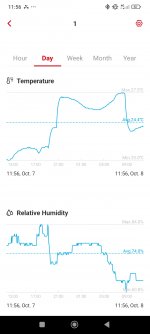mme_oscar
Active member
How do you use vpd with drying material? It's not just Rh and temp...Very well explained @Rocket Soul, just to add to this, the VPD is also crucial when drying and curing. We're just developing a product and this is one of the main metrics for us.
So even after the plant is dead it's a good idea to keep an eye on the VPD.
Hopefully we'll be able to go to market soon



